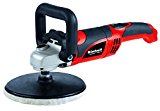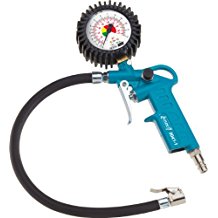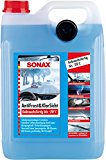Car polish purchasing advice: how to choose the right product
- The most important facts in brief
- A polish levels out irregularities and scratches in surfaces such as car paintwork.
- It transforms a dull, unattractive surface into a smooth, shiny texture and protects the paint from environmental influences such as UV radiation and dirt.
- Initially, users should resort to gentle polishes. If the cleaning performance is not satisfactory, they can use pastes with a higher abrasive effect.
- For the inexperienced, manual application or the use of an eccentric polishing machine is recommended.
- After polishing, a waxy sealant is often applied to protect the paintwork from environmental influences.
- Combination products consisting of a cleaning polish and a sealant, such as carnauba wax, save users a work step and are particularly suitable for private users and manual polishing.
Polish in car care
Whether on a new car, a vintage car or even a beloved motorbike: the shine of the paintwork disappears and scratches and micro-cracks appear in the upper layers of the paintwork. If dirt particles settle in these gaps, the surface appears increasingly dull. Owners can prevent this unattractive visual decline by treating their motorised friends with polishing pastes. The rule is always: the paintwork should be gently prepared, not intensively peeled. This not only has a visual benefit, but also protects the vehicle from corrosion.
When used in car care, the polish serves to repair irregularities such as scratches in the paintwork. This benefits the appearance, as the reflections on the levelled paint create a high-gloss effect that is perceptible to the human eye. Many car polishes also have a UV filter that protects the paint from fading due to direct sunlight.
Vehicles that have not benefited from polishes, on the other hand, can quickly be recognised by colour fading and paint chipping. Furthermore, the products often contain additives that achieve a lotus effect. Water and dirt are kept away from the surface structure by a special sealant and roll off. Liquids, for example, simply flow down the paintwork without leaving a trace, and dirt adhesions have a harder time sticking to the paintwork.
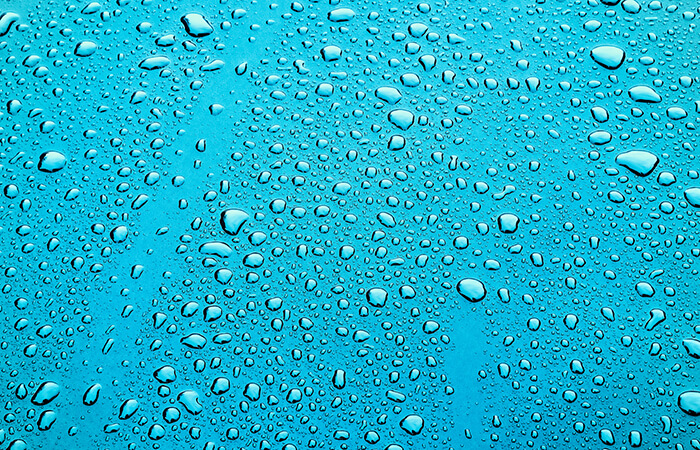
Small abrasive particles bound in a carrier fluid clean the vehicle paint. The particles smooth the rough surface and fill depressions. The changed surface structure creates a shine. In practice, professional polishers often proceed in two stages, because not all polishes have a sealing effect: First, they polish by machine. Then they apply a sealant, which in most cases is waxy (such as carnauba wax). This further enhances the gloss effect and makes it more difficult to resoil. In addition to the wax component, nanotechnology, acrylic or other synthetic components can also be used. Furthermore, there are combination preparations on the market that save users a work step.
There is no general answer to the question of how often a car should be polished. A manual polish usually removes a maximum of 0.3 micrometres of the clearcoat. Therefore, up to 100 applications are possible before the paint is damaged. When using a machine, users have to be careful because of the higher contact pressure, especially on edges and folds. The maximum number of applications is also reduced in this case. The average car enthusiast polishes his car twice a year by hand.
The right polishing technique
Polishing can be carried out in various ways. For private use, manual polishing, i.e. polishing by hand with the help of a rag or cloth, is the most common. In contrast to using a polishing machine, users are unlikely to cause damage if they use it incorrectly, for example by applying too much pressure when rubbing.
Manual polishing
The manual method is the most labour-intensive and time-consuming, but due to the comparatively low costs it is the most widespread. It is especially suitable for the inexperienced. When applying the polish by hand, they have a better feel for the appropriate pressure. With machine polishing, on the other hand, there is a risk of applying too much force and damaging the paintwork. If you want to polish the entire car, you should plan on several days, including preparation and follow-up time.
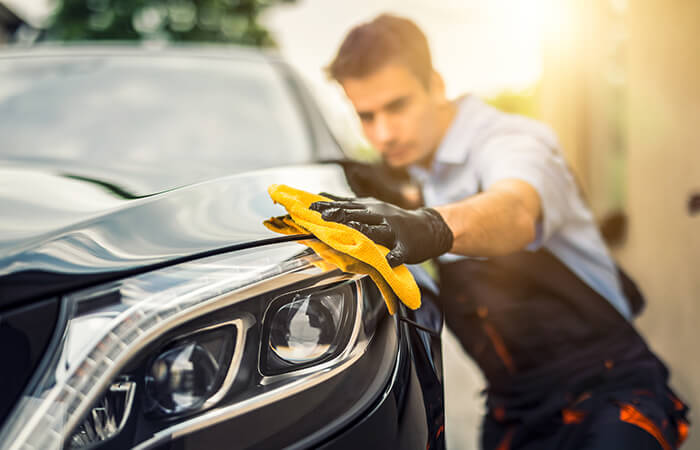
After cleaning, users can rub treated surfaces with a soft cloth, such as a microfibre cloth or a soft brush, to obtain the shiniest possible surface. This procedure works just as well for car paint as for furniture, leather shoes or even wooden floors. Special polishes with chemical or mineral additives are often used.
Machine polishing
Machine polishing always means using a polishing machine. The attachment moves in a clockwise direction, the user presses it onto the workpiece and guides the head so that circular movement patterns are created. This method is suitable in the home for car paint care or restoring older furniture. Important: When buying polish, consumers must make sure that the respective type is approved for machine use. Otherwise, the polish may become too hot and damage the lacquer.
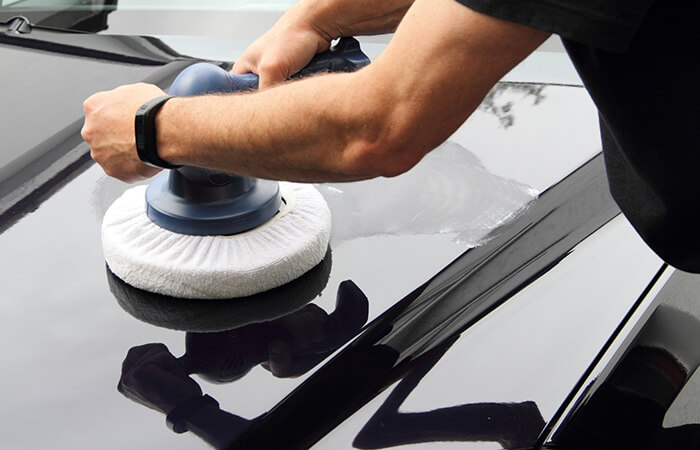
In machine polishing, a distinction is made between eccentric and rotary machines. The former polish in elliptical movements, individual areas do not overheat so easily. Therefore, these models are particularly suitable for inexperienced users. Rotary machines, on the other hand, are more powerful, but should only be used by skilled personnel.
Automated machine polishing
This process is used exclusively in industry. Here, high-tech robots polish workpieces on so-called rotary indexing tables the materials to a high gloss and absolute smoothness. The term rotary indexing table or rotary indexing machine refers to a machine tool in which the workpiece to be machined is clamped. Here, very precise work steps and the machining of a very large number of parts are possible.
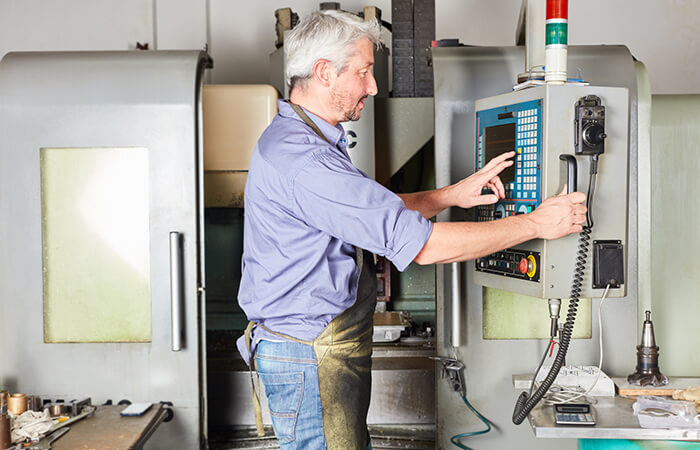
Ingredients and areas of application
Polishing is a so-called “cutting” process. The grain contained in polishing agents mechanically changes the surface to be treated. This process evens out a wide variety of unevennesses.
On the one hand, this has an aesthetic advantage; the light is reflected evenly and is perceived by the human eye as a high gloss. On the other hand, the smoother surface makes the material less sensitive to environmental influences such as sunlight and everyday dirt. In industry, this process is often used to prepare materials for subsequent processes, such as electroplating.
Polishing
Polishing changes the state of the material from a matt surface with low light reflection to a shiny surface with high light reflection.
Chemical polishing aids contain special minerals that remove unevenness and make the surface smoother overall.
Application time and polishing result
A polishing process usually consists of several steps. How much time such a process takes depends on various factors:
- Initial condition, i.e. type of pre-sanding
- Performance of the polishing medium
- Process parameters such as contact pressure, number of revolutions
- Desired target surface
When working with polishing agents, moderate application should generally be observed. The longer the polish treatment lasts, the higher the risk of damage to the surface.
Different types of polishing minerals
There are many different polishing agents. The intended use determines the choice of minerals added to the polish. There are naturally occurring minerals that can be added to the polishing agents, for example triple or quartz, and industrially manufactured minerals, such as polishing clay (aluminium oxide). The different minerals have a significant influence on the effect of the polishing agent. The binding of the minerals determines the degree of abrasiveness.
Abrasiveness
The term abrasiveness describes the emerizing effect. It is therefore a question of how strongly the polish contributes to the removal of surface material. Such abrasiveness is necessary to remove scratches. A certain layer is removed from the clear lacquer, thereby permanently removing scratches. If a polish contains silicone instead of such abrasive particles, the scratches in the paint are filled. In this case, however, the scratches reappear after the next rain. A silicone paste is therefore not recommended.
Polishing pastes for every purpose
Depending on their requirements, polishes contain added synthetic materials. For example, manufacturers use them to bind and absorb oil residues on the paint. Other polishing pastes change their properties during use. Initially, they are highly abrasive, but gradually the minerals decompose so that the abrasive effect decreases. This process is particularly suitable for car polishing: if damage is initially levelled in the course of material removal, the decomposition ensures that a high gloss is subsequently produced without further material removal. If, on the other hand, the level of abrasiveness is too high, the paint can be damaged.
| Name of the agent | Intended use |
|---|---|
| Abrasive paste | Paste with abrasive agents to abrade paint and thus remove paint damage. |
| Sealer | Sealing lacquer and creating gloss. |
| (Abrasive) polish | Combination preparation consisting of abrasives and sealants. Removes small scratches and provides gloss. |
Tips for proper polishing
The following video instructions from the vehicle portal kfz-helpline.de describe paint care using a polishing machine. Of course, it can also be used as a benchmark for cleaning by hand.
The difference between manual and machine polishing is, on the one hand, that the polishing machine works faster, as it reaches up to 6,800 revolutions per minute. On the other hand, it removes more and also deeper paint damage in this way, which may remain visible after manual polishing by an inexperienced user.
Equipment needed
First of all, users need a polishing machine and suitable sponge attachments (alternatively polishing sponges or cloths for manual cleaning). It is important that there are actually several cleaning aids, as the pores of the sponges close up with foreign substances the more they are used. It is not a must, but very useful to purchase a car wash detergent and so-called cleaning clay. These aids remove impurities such as tree resin and insect remains that are difficult to dissolve after washing the car.
The right preparation
First of all, it is very important to remove dirt from the paintwork. Car owners can ensure this with a trip through the car wash, but much better still with a thorough hand wash. This is followed by finishing with cleaning clay. With it, users can remove even stubborn dirt such as fly tar, rust and fly residue. In addition, users should mask off plastic parts and rubber strips on the vehicle.
Caution with plastic parts
Users should take special care when applying and spreading polishes. The ingredients of many products attack polycarbonate, a material used in headlight and indicator housings. Frequent polishing and careless use – namely when not only the paintwork but also the plastics come into contact with the product – will cause small cracks to form or the material to become dull and gradually “go blind”.
The right polishing
When using a polishing machine, users must first ensure that the polishing sponge is correctly attached to the machine. Then, depending on the instructions for their chosen polish, they pour the appropriate amount of liquid onto the sponge and spread it evenly over it. With the machine still switched off, dab the sponge onto the area to be polished to distribute the polish. Now place the sponge on the paint under light pressure and switch on the machine. If the pressure is too low, there is a risk of spattering, and users will have to polish again to prevent unsightly differences in colour. Gradually increase the drive speed until only a thin film of polish remains.

Regardless of whether you use a polishing cloth or a machine, the area to be polished should be about 40 by 40 centimetres and always overlap the last area by half, i.e. 20 centimetres.
Preserving smoothed paint for longer
For preservation purposes, a sealant can be applied afterwards. Protective pastes are available on the market that achieve a lotus effect: Water and dirt bead off and the shine is retained for a longer period of time. Some combination products combine the effect of a polish with that of a protective paste, so that users can bring the surfaces to be treated to a high gloss and also protect them directly in one pass.
The right place for polishing
Sheltered places such as a garage or carport are ideal for polishing, as the risk of the sun drying out the polish too quickly is minimised here. Also, new dirt will not fall onto the car so quickly, for example in the event of a gust of wind.
Don’t go for a coarse polish straight away
In general, the coarser the polish, the greater the paint removal. If users are unsure which polish is right for their car, they should first try out the fine or medium polish before reaching for the coarse variant. If the result is not satisfactory, they can always use the coarse polish afterwards. If they do not follow the sequence and use the wrong polish, inexperienced car lovers in particular may damage the paintwork by sanding it too much.
Different durability in wet conditions and under mechanical influences
Some manufacturers advertise with the promise that their product is “wash street resistant”. However, the wetness and the mechanical impact of the brush show a different result.
Some products disappear after the first machine wash, others last seven to eight cycles.
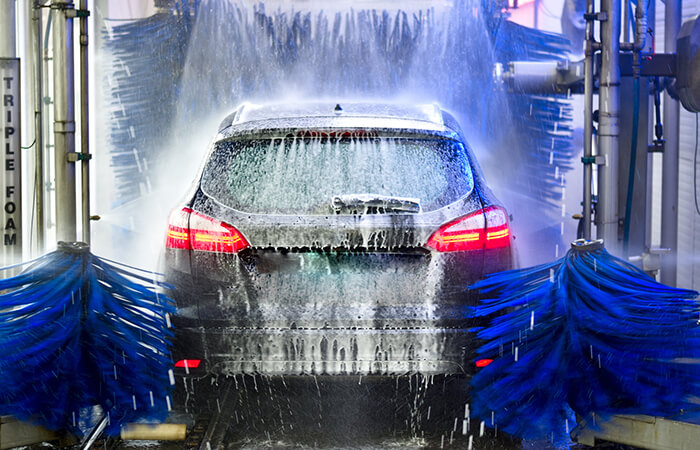
Special polishes for different paint colours
There are many special products on the market for different paint colours. In general, however, all products are suitable for all paint colours. Black paintwork, however, is more difficult to polish than all other paintwork colours: unattractive-looking holograms form very quickly. For these vehicles, it is worth investing in an anti-hologram polish.
Holograms
The polishing agent and the sponge used often have a high abrasive effect. When polishing, it is not uncommon for users to create uneven indentations in the clearcoat. These work paths then become visible as unsightly “holograms”.
Incorrect polishing, a dirty cloth or pad or a visit to a car wash can lead to the formation of holograms. Therefore, beginners are advised to use an eccentric polishing machine.
The tiny grooves impair the appearance of the paintwork enormously. They alter light reflections and make objects reflected in the paint appear three-dimensional. If holograms are already visible in the paintwork, an anti-hologram polish and the use of an eccentric polishing machine will help.
Image 1: © trendobjects / stock.adobe.com | Image 2: © REDPIXEL / stock.adobe.com | Image 3: © maho / stock.adobe.com | Image 4: © Robert Kneschke / stock.adobe.com | Image 5: © Dron / stock.adobe.com | Image 6: © PixPartout / stock.adobe.com



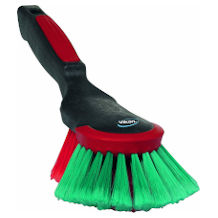


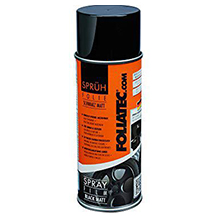
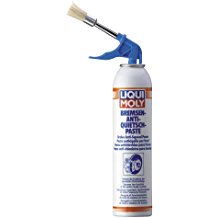
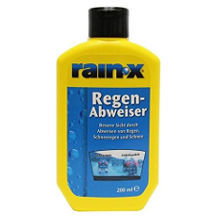

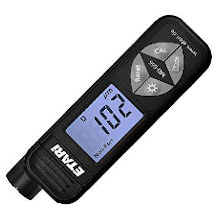















 7,943 reviews
7,943 reviews
